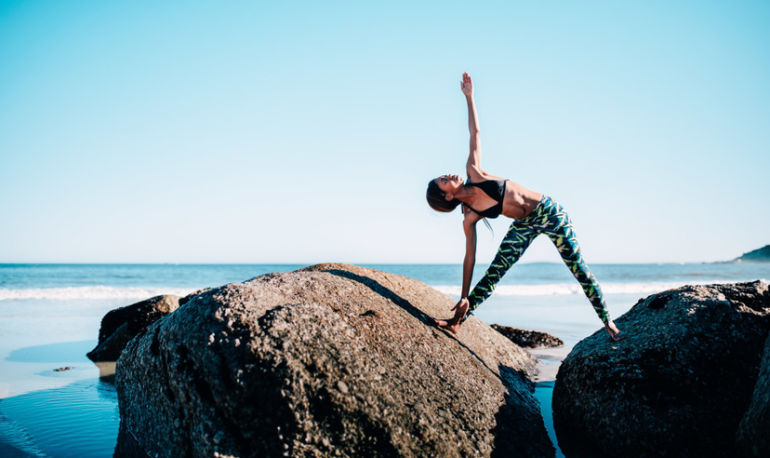There are two things you should know about me. The first is that I love yoga. The second is that I have a really, really hard time sleeping.
My insomnia isn’t constant, and it has gotten better over the years, mostly thanks to meditation.
But one thing I’ve noticed about my delicate relationship with sleep is that I have a particularly hard time getting enough of it when my body senses a shift. My bouts of sleeplessness can be brought on by something as big as a new job or apartment or something as small as a change in the weather.
Almost every single year, the onset of fall brings on a wave of insomnia—which is exactly where I found myself a few weeks ago when I detected the first chill in the air and saw a few red and orange leaves popping up on the trees outside my bedroom window.
As I mentioned, I love yoga. I have a complicated relationship with meditation, but overall I enjoy the positive impact it’s had on my life. Because I know both of these activities are correlated with sleeping better, I decided it was time to take my yoga and meditation practice up a notch.
So for two weeks, I meditated and practiced yoga every single day. Here’s how it all panned out.
The research on yoga, meditation, and sleep.
According to the National Sleep Foundation, people have insomnia for a wide variety of reasons. For some people, insomnia is the result of a physical condition, such as allergies, acid reflux, or chronic pain. For others, it’s caused by mental conditions like anxiety and depression. Sleeplessness can also be associated with lifestyle factors, such as alcohol consumption or drinking caffeine too late in the day.
For people who struggle with insomnia because of factors like anxiety and stress (me), research shows that practicing mindfulness meditation regularly is a great way to break the cycle of sleeplessness. A 2014 study conducted at Carnegie Mellon found that practicing mindfulness meditation for 25 minutes every day for three days significantly lowers psychological stress, making it easier for stressed-out insomniacs to fall asleep.
Similarly, a 2015 national survey found that 85 percent of people who practiced yoga found it reduced stress, and 55 percent of yoga practitioners found it helped them sleep better.
Long story short, the research is in: When it comes to sleeping better, yoga and meditation are excellent ways to make that happen.
How my experiment panned out.
The rules of my two-week yoga and meditation experiment were pretty straightforward. Every day for two weeks, I practiced yoga for at least one hour. Most of the time I went to a class, but when that was too inconvenient—I was away one weekend, for example—I practiced at home.
My meditation regime wasn’t too intense: just 10 minutes every day, usually in the evenings.
As much as I love yoga and mostly like meditation, actually doing both of these things every single day was surprisingly tough. I’m someone who goes to yoga when I’m in the mood, and that usually means practicing about four times a week. Taking that number up to seven didn’t seem like a huge deal when I thought about it, but it proved to be a lot tougher than I thought it would be.
I had yoga sessions during which all I could think about was how badly I wanted it all to be over, and there were moments during my home practice when I had to remove my phone from the room so I wouldn’t flop down on my mat and start scrolling through Instagram.
Even though my meditation sessions were shorter, they were arguably even more difficult. As I’ve said, I love the positive impact meditation has on my life, but the act of meditating is often grueling for me.
Still, I stuck to my word. The first few nights weren’t perfect, and I definitely experienced some tossing and turning. But once Day 5 rolled around, I was noticing just as much of an improvement in my sleep as I was in my hamstring flexibility and ability to quiet my mind.
By the second week, I was falling asleep minutes after my head hit the pillow. Maybe that had to do with settling in to fall, or perhaps it was related to being physically exhausted from all those downward dogs. But based on how much calmer I felt overall, I’m going to bet it had a lot to do with syncing my breath with my movement and becoming more mindful.
So, fellow insomniacs, if you’re up for a challenge, I suggest you try this one.
From Mind Body Green

